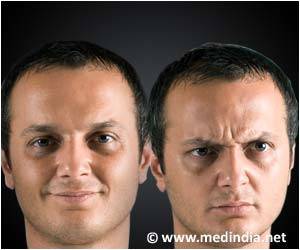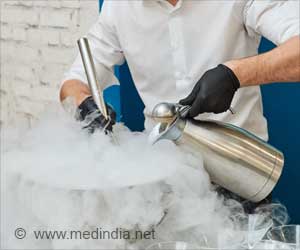- Bipolar disorder is a mental condition that produces uncharacteristic changes in a person's mood, energy, activity level, and focus
- A recent study shows that people suffering from bipolar disorder are more likely to die due to external factors like suicide, violence, and accidents
- When it comes to physical illness, alcohol is the leading cause of mortality in people with bipolar disorder
A higher risk of mortality from any cause has been regularly found in people with bipolar disorder across several counties. However, it is unclear if there are specific factors or how much somatic sickness (physical disease) adds to this risk (1✔ ✔Trusted Source
Cause-specific excess mortality after first diagnosis of bipolar disorder: population-based cohort study
Go to source).
Between 2004 and 2018, the Finnish researchers used countrywide medical and social insurance databases to identify and follow the health of all 15-64 year olds with bipolar disorder.
The standard mortality ratio (SMR) was calculated by dividing the number of deaths observed over a given period (around 8 years of monitoring) among those diagnosed with bipolar disorder by the number expected in the Finnish general population to determine the excess deaths directly attributable to the condition.
They followed the progress of 47,018 persons with bipolar disorder who were 38 years old on average at the start of the study. More than half (57%) of the participants were female.
Bipolar Disorder is Associated with a 6-Fold Increased Risk of Death from External Causes
In all, 3300 (7%) of them died during the monitoring period, compared to 141,536 persons in the general population, resulting in a 6-fold increased risk of death from external causes and a 2-fold increased risk of death from somatic causes.Their average death age was 50, and nearly two-thirds (65%; 2137) of these fatalities occurred among men. 61% (2027) died from a somatic cause, whereas 39% (1273) died from an external cause.
Alcohol: A Leading Physical Cause of Death for People with Bipolar Disorder
Alcohol was the leading cause of death in 2027 somatic illness fatalities, accounting for 29%, followed by heart disease and stroke (27%), cancer (22%), respiratory disease (4%), diabetes (2%), and behavioral problems related with other drug abuse (1%). The remaining 15% was made up of various other reasons.The liver condition accounted for over half of the 595 alcohol-related fatalities (48%), followed by unintentional alcohol poisoning (28%), and alcohol dependency (10%).
Suicides: A Major External Factor in the Death of Bipolar Disorder Patients
The majority of external cause fatalities (58%) were due to suicide, with almost half (48%) owing to overdose with prescribed mental health medications, including those used to treat bipolar disorder.Overall, nearly two-thirds (64%) of all deaths were excess deaths—deaths that were greater than predicted for comparable age and gender and were directly linked to bipolar disorder.
Excess fatalities from somatic causes accounted for 51%, compared to 83% from external causes.
The majority of the additional fatalities from somatic sickness were caused by alcohol (40%)—a rate three times greater than the overall population—cardiovascular disease (26%), or cancer (10%).
Suicide accounted for 61% of the extra fatalities from external causes, a percentage that is about 8 times greater than that of the overall population.
Excess fatalities from external causes were significant in all age categories, but whereas external causes accounted for the majority of the excess among 15-44 year olds, external and somatic causes contributed about equally among 45-64 year olds.
The researchers omitted patients with schizophrenia and other psychotic diseases, which they admit may have resulted in an overestimate of the extra mortality caused by bipolar disorder. They explain that a history of persistent symptoms of psychosis, delusions, and hallucinations is known to be connected with a considerably higher risk of mortality.
External Factors Play a Bigger Role than Physical Disease in the Mortality of People with Bipolar Disease
Given that external reasons appear to play a larger role than physical disease in excess fatalities among persons with bipolar disorder, the researchers conclude that the present treatment focus on preventing physical illness to lessen this excess should be reassessed.“A balanced consideration between therapeutic response, potential serious long term somatic side effects of different medicines, and risk of cause-specific premature mortality is needed, especially in younger persons,” they write.
“Targeting preventive interventions for substance abuse will likely reduce the mortality gap both due to external causes and somatic causes. Suicide prevention remains a priority, and better awareness of the risk of overdose and other poisonings is warranted,” they add.
Reference:
- Cause-specific excess mortality after first diagnosis of bipolar disorder: population-based cohort study - (https://mentalhealth.bmj.com/content/26/1/e300700)
Source-Medindia
















